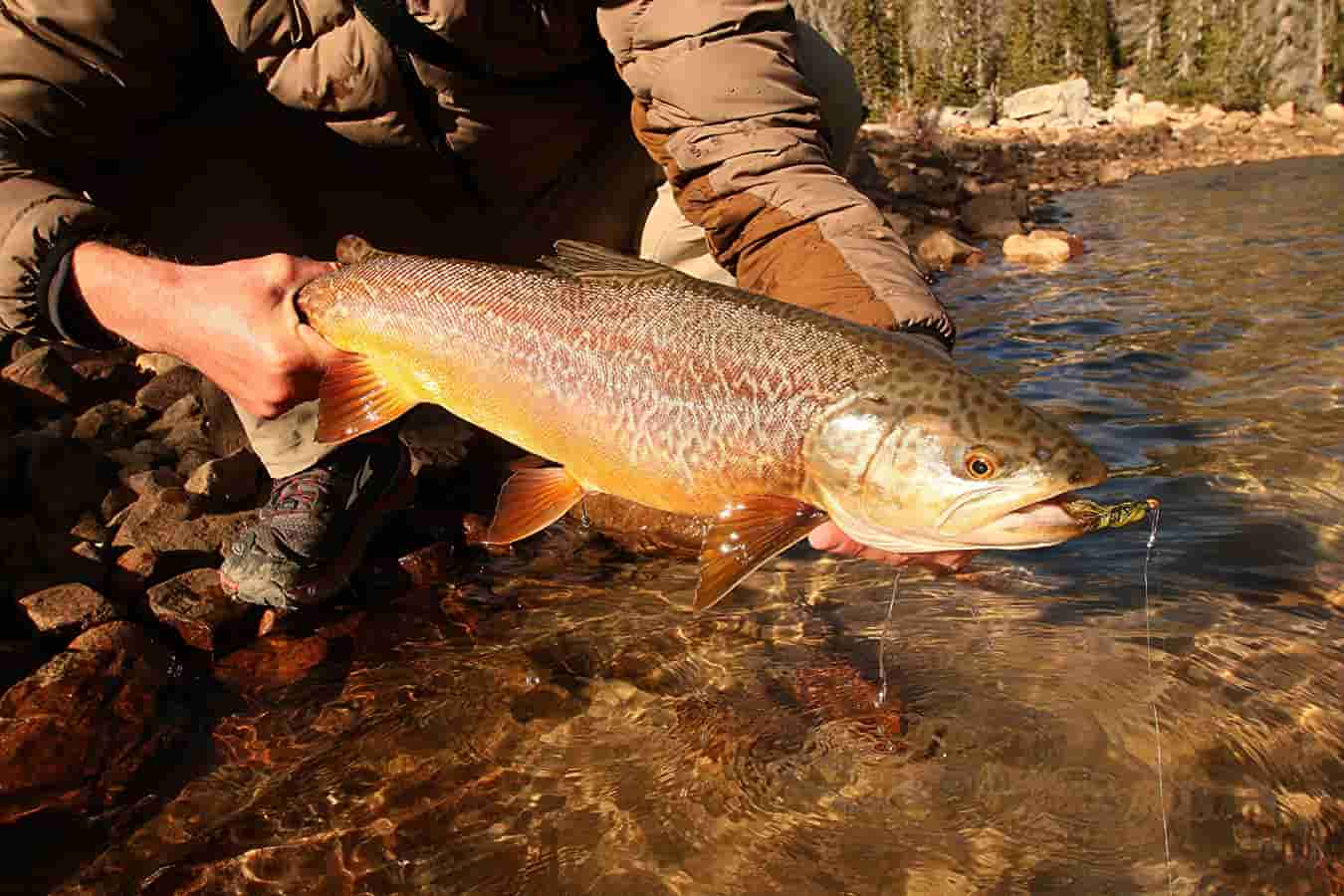How to Choose the Right Streamer

Image by Mike Doughty
There’s no such thing as one tool for the job. Even the most basic toolbox will have a hammer, a couple of screwdrivers, wrenches, and a decent set of pliers. The idea of trying to frame a house with just a hammer or rebuild a carburetor with just a screwdriver seems ludicrous to most people. Yet so many of these same folks will go out and chase trout with just one or two streamer patterns.
While having a couple of favorite streamer patterns isn’t a bad thing, you should be bringing a wide variety of streamer patterns with you to the water. Every streamer has a specific shape, fishing depth, swimming action and there are places in the river where they are going to be the most efficient. So if you want to consistently catch the big, streamer-eating trout you’re after, you’ve got to have the right tool for the job.
Streamers For Clear Shallow Water
Most fly anglers believe that fishing streamers in low and clear water is an exercise in futility. The fish are extremely spooky during these times and spread out across the river. However, these low clear conditions are common in late autumn when streamer fishing is usually pretty good, so most anglers go out and chuck their big bugs anyway. While you can catch a few fish this way for sure, if you’re using the right streamer patterns in low clear water, you can catch a hell of a lot more.
Shallow clear water calls for flies with natural colors, not a lot of flash, and neutral buoyancy. You want patterns with a sleek profile that look as natural as possible so you can make long casts and slow deliberate retrieves with a lot of jerks and pauses that won’t get your fly snagged up on the bottom. Some of the best include the Zonker and the Double Bunny but if you’re really hunting for a monster in low and clear water, it’s hard to go wrong with a Double Deceiver or a Sluggo. Both patterns move a lot of water and are sure to get the attention of the slabs you’re after.
Streamers For High Cloudy Water
Fishing streamers in high cloudy or muddy water can be a real challenge. Trout are pushed tight to cover and will only move to feed on flies dropped right in front of their faces, so it can be difficult to get fish to strike unless you know exactly where they’re holding. However, you can get trout to move to streamers during high muddy water so long as you’re using patterns that will get their attention.
High, off-colored water calls for flashy fly patterns with big profiles you can smack down in the water, strip a few times, and then quickly cast again to draw as much interest from locked down trout as possible. On small streams, flies like the Autumn Splendor and the Slumpbuster can be perfect patterns for this style of fishing. However, fishing on bigger rivers calls for bigger chunks of meat. In such situations, it’s hard to go wrong with Dally’s Twerking Minnow or a Sparkle Yummy. These larger flies have a lot of flash, make a big splash, and get down quickly—just the thing to tempt a big high-water trout to come calling.
The All-Rounders
There are plenty of patterns that will get the job done in a variety of different water conditions. The key is to know which streamer patterns to use and when. If you’re fishing in a river with a lot of deep holes and fast runs, your best bet is to use heavier jig-style streamers that can be lifted and twitched back to the boat. The classic Clouser Minnow can be great for this style of fishing, as can the Muddy Buddy and the Squirrel Zonker. If you’ve got bigger trout in mind though, you may have more success using larger patterns like the Sex Dungeon or a Sculpin Bunny.
When fishing on larger rivers with a lot of different currents and a variety of different types of water to cover, you’’ll want streamers patterns that can be fished in a variety of different ways. Streamers like the Wooly Bugger, Egg Sucking Leech, and the Beadhead Bouface can all be stripped off the banks, swung through long runs, and jigged in deep holes accordingly. While they may not be perfect for all these situations, with some adaptive and creative fishing techniques, you can make all these flies work for you.
If you’re hunting for larger trout and want to use a bigger streamer, you’ll want to stick with large profile patterns. Flies like the Double Bunny, the Deceiver, the Kill Whitey, and the Dirty Hippy can be great patterns for swinging and stripping in shallower, slower water while heavily weighted patterns like the Sculpzilla and the Dolly Llama can be great for getting down into deep holes to strip, swing, or jig for the big one.
Filling Your Toolbox
Just as you wouldn’t try to take on a massive construction project with only a hammer so too should you not take on a day of streamer fishing with only one fly pattern. This may be frustrating as it means you either have to buy a lot of streamers or spend a lot of time on the tying vice, but in the end it’s worth it. When you’re out there ripping streamers with the right tools for the job, you know that one or two quick fly changes can get you into the giant trout of your dreams.











